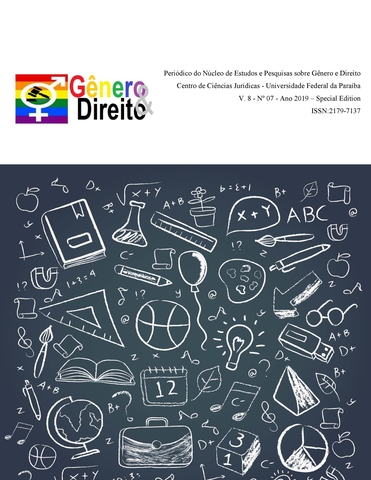THE FOLKLORIC ELEMENTS IN THE G. BASHIROV’S WORKS
DOI:
https://doi.org/10.22478/ufpb.2179-7137.2019v8n7.50076Palavras-chave:
Tatar literature, prose, folklore traditions, folklorism.Resumo
The article is devoted to the study of folkloric elements in the works of Tatar writer of the second half of the twentieth century, Gumer Bashirov. Verbal folklore reflects the spiritual world of the people, its ideals and dreams, values of life, centuries-old creative experience of the people, language features, poetic idea of the world. Also, folklore is unique in its form and content, themes and subjects, which attract writers and poets. In the works, which depicts the spiritual world, the way of life of the people, their rural life, the use of folk traditions and elements is an integral part of the work of art. In the Tatar village prose, which includes the work of the studied writer, in order to reflect the Tatar life in the countryside, elements of family and household and calendar customs are often included in the skeleton of the work. In this work, the objects of study are the folklorisms used in Bashirov’s autobiographical novel "My homeland is a green cradle." The aim of the study is identifying and studying of switching the function of the folkloric elements in the studied novel. The author sees one of the purposes for writing this novel is in the preservation of Tatar folk customs, rituals, traditional foundations of rural life and language specifics. The study enables to conclude that the autobiographical novel "My homeland is a green cradle" by G. Bashirov has prominently many examples of Tatar verbal folklore. The author uses almost all the main genres of Tatar folklore: fairy tales, tales and legends, song folklore and baits (lyrical epic), small genres – proverbs, sayings, omens, winged words, good wishes, curses, conspiracies, oaths, as well as family and household and calendar customs that existed in the early twentieth century.
Downloads
Referências
Akhmetov F. (1969). On some features of the use of folklore in modern Tatar prose. Questions of the Tatar language and literature: KN. 4. – Kazan, 81-87.
Galiullin T. N. (1988). Sources of inspiration. Monograph. – Kazan: Tatknigoizdat., 365 p. (in Tatar).
Sadekova, A. (1995). Folklore in the aesthetics of galimjan Ibrahimov. – Kazan: Tatar.kN. ed., 105 p.
Mingazova, L. I., Galimullin, F. G., & Galimullina, A. F. (2014). Folk heroes in the poetry of the people of the Volga and Ural regions. Journal of Language and Literature (Baku, Azerbaijan), 5(4), 252-555.
Mingazova, L. I., Galimullin, F. G., & Galimullina, A. F. (2016). the mythological image of Shuralen and its reflection in the folklore of Volga-Ural region. Turkish online journal of design art and communication.–Turkey, TOJDAC, 6, 3256-3262.
Yuldybaeva, G. V., Mingazova, L. I., & Kayumova, G. F. (2017). The Folk Epic-Tulyak and Susylu‖,-Zayatulyak and Hyuhylu‖: the History of Record and the Plot. Astra Salvensis, (S2), 673-680.
Mingazova, L., & Sulteev, R. (2014). Tatar and English Children's Folklore: Education in Folk Traditions. Western Folklore, 73(4), 410.
Yusupova N. M., Ganieva A. F., MinnullinaF.Kh., Nadyrshina L. R., Yusupov A. F. (2017). Image-Symbols in the Tatar Poetry Between the 1920s-1930s. International Journal of Engineering & Technology, 7(4.38), 724-726.
Golikova G., Motigullina A., Zamalieva L. (2017). Artistic functions of the folk concept of water in the works of Russian and Tatar writers of the later half of the 20th century (works by V. Astafievanf G. Bashirov). Modern journal of language teaching methods, 7(5), 72-81.
Saifulina, F. S., Zamalieva, L. F. (2012). Folk wedding ceremony as a literary source in Tatar prose. Philology and culture, 3(29), 146-149.
Rashitova, M. (2010). The poetics of the works of Gumer Bashirov: author. kand.Philo. Sciences'. – Kazan, 23p

